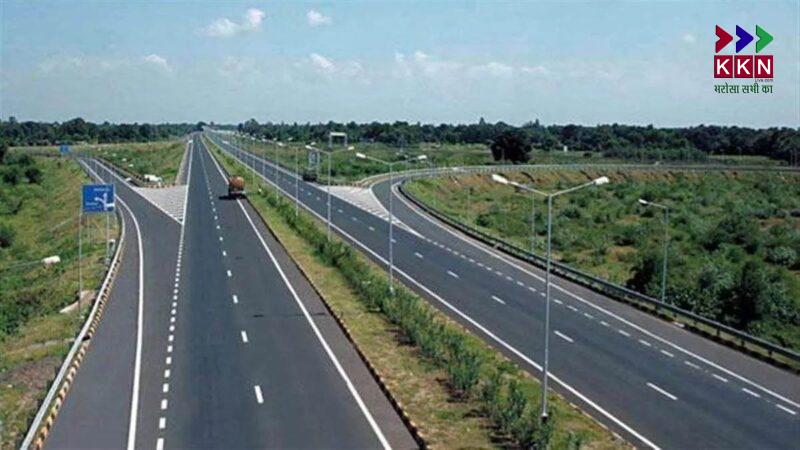
After a prolonged 13-year wait, the much-anticipated Muzaffarpur-Hajipur bypass has finally opened to public traffic on Saturday, October 11, 2025. The completion of this crucial infrastructure project marks a significant milestone for Bihar’s transportation network, promising substantial relief from traffic congestion that has plagued the region for years.
Project Specifications and Infrastructure
The bypass spans 17 kilometers and forms a vital component of National Highway 22 (NH-22), connecting Madhaul on the Muzaffarpur-Hajipur route directly to the Sadatpur four-lane road. Built at a cost of ₹200 crores for construction and an additional ₹199 crores for land acquisition, this modern highway represents a total investment of nearly ₹400 crores.
The bypass incorporates state-of-the-art engineering features including:
-
66 underpasses to ensure uninterrupted local connectivity
-
4 minor bridges for seamless water crossings
-
1 Railway Over Bridge (ROB) at Kaparpoora to eliminate level crossing delays
-
Modern four-lane configuration with advanced safety features
Immediate Traffic Benefits
The opening of this bypass addresses critical traffic bottlenecks that have hindered movement through Muzaffarpur city for years. Travelers from Hajipur to destinations like Darbhanga, Sitamarhi, and Motihari no longer need to navigate through heavily congested urban areas including Ramdayalu, Chandni Chowk, Madhaul, and Khabra.
District Magistrate Subrat Kumar Sen described the moment as a “historic achievement,” emphasizing the transformative impact on regional connectivity. The bypass is expected to reduce travel distance by approximately 8 kilometers while significantly cutting journey times.
Long-Delayed Construction Timeline
The project’s journey reflects the challenges often faced by major infrastructure developments in India. Originally approved in 2010, construction began in 2012 due to initial land acquisition complications. However, the project faced substantial delays when landowners filed court cases, leading to a complete construction halt for approximately six years from 2013 to 2020.
Construction resumed in 2020-21 following court directives and sustained efforts by the state government. The National Highways Authority of India (NHAI) Patna Division oversaw the project completion under Project Director Arvind Kumar.
Regional Economic Impact
The bypass is expected to catalyze significant economic development across North Bihar. Key anticipated benefits include:
Enhanced Connectivity
-
Direct access from Hajipur to Motihari, Darbhanga, and Sitamarhi without urban diversions
-
Improved connectivity for districts including Vaishali and Samastipur
-
Faster access to Nepal border points for international trade
Industrial and Commercial Growth
-
Reduced transportation costs for businesses
-
Improved logistics efficiency for agricultural produce movement
-
Enhanced prospects for industrial development along the corridor
Environmental Benefits
-
Reduced urban pollution due to diverted heavy vehicle traffic
-
Lower fuel consumption through shorter, faster routes
-
Decreased congestion in residential and commercial areas
Technical Engineering Achievements
The bypass incorporates several notable engineering solutions to ensure seamless local connectivity while maintaining highway efficiency. The 66 underpasses have been strategically positioned to connect rural areas, ensuring that farmers, students, and local residents maintain uninterrupted access across the highway.
The Railway Over Bridge at Kaparpoora represents a particularly significant achievement, as its delayed completion had been the primary obstacle preventing the bypass’s earlier opening. The completion of girder installation and deck construction in recent months finally removed this last hurdle.
Public Response and Early Usage
Local residents and regular commuters have expressed significant satisfaction with the new facility. Nishant Kumar, traveling from Chakiya to Patna, noted: “Now we won’t have to get stuck in traffic jams from Chandni Chowk to Ramdayalu and Madhaul. This will also save time”.
The bypass has already begun accommodating substantial traffic volumes, with vehicles moving smoothly along the new four-lane corridor.
The completion of the Muzaffarpur-Hajipur bypass is part of a broader 63.17-kilometer four-lane project connecting the two cities. With approximately 54 kilometers of the total project already completed, this bypass represented the final missing link in creating a comprehensive high-speed corridor.
District officials anticipate that the bypass will serve as a catalyst for tourism development, industrial expansion, and commercial growth throughout the region. The improved connectivity is expected to enhance educational and healthcare access for rural populations while facilitating agricultural market integration.
This infrastructure achievement demonstrates the potential for transformative development when persistent challenges are systematically addressed, offering hope for similar projects across Bihar and India.